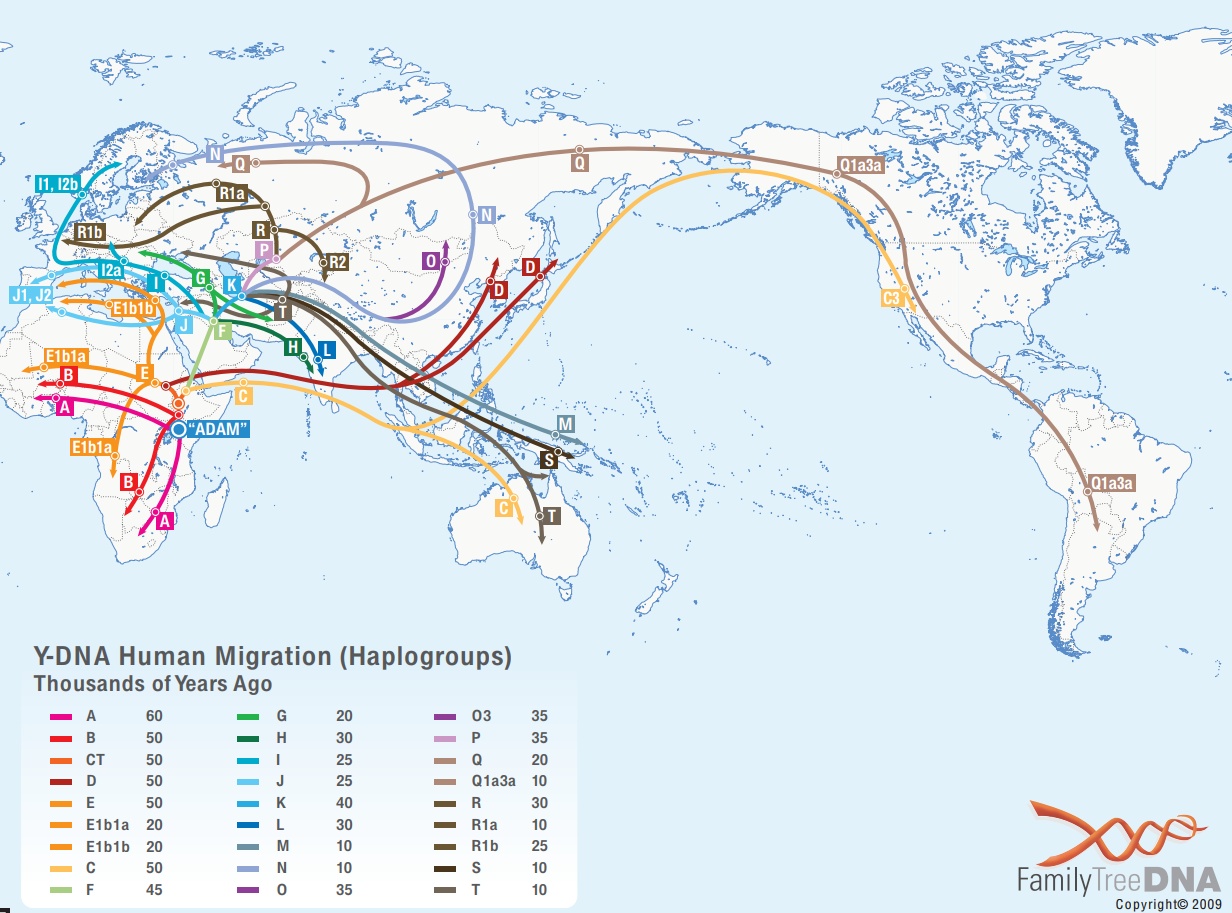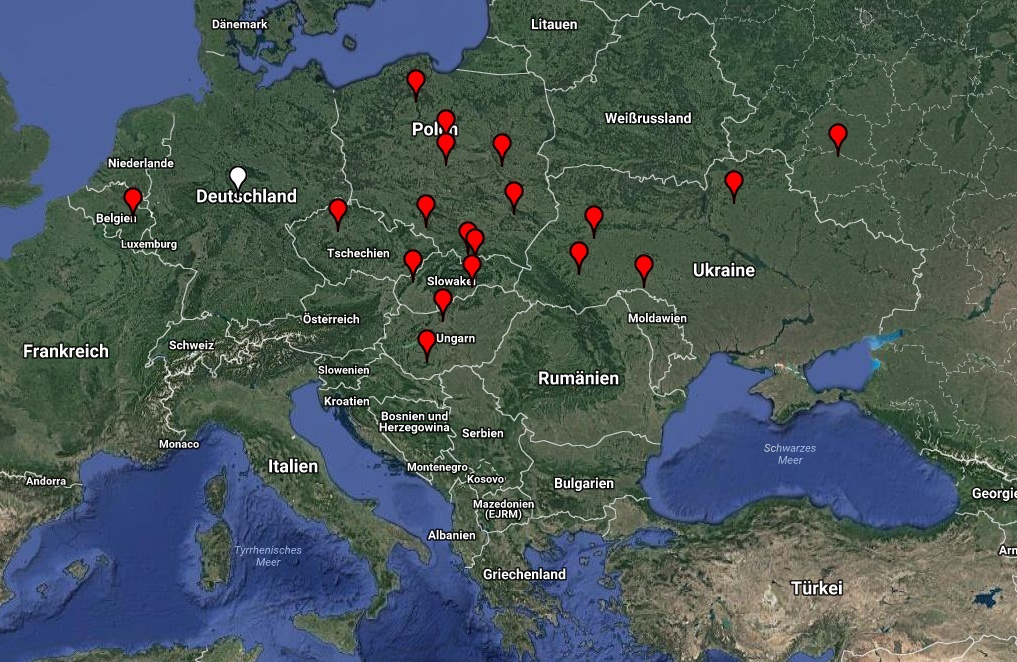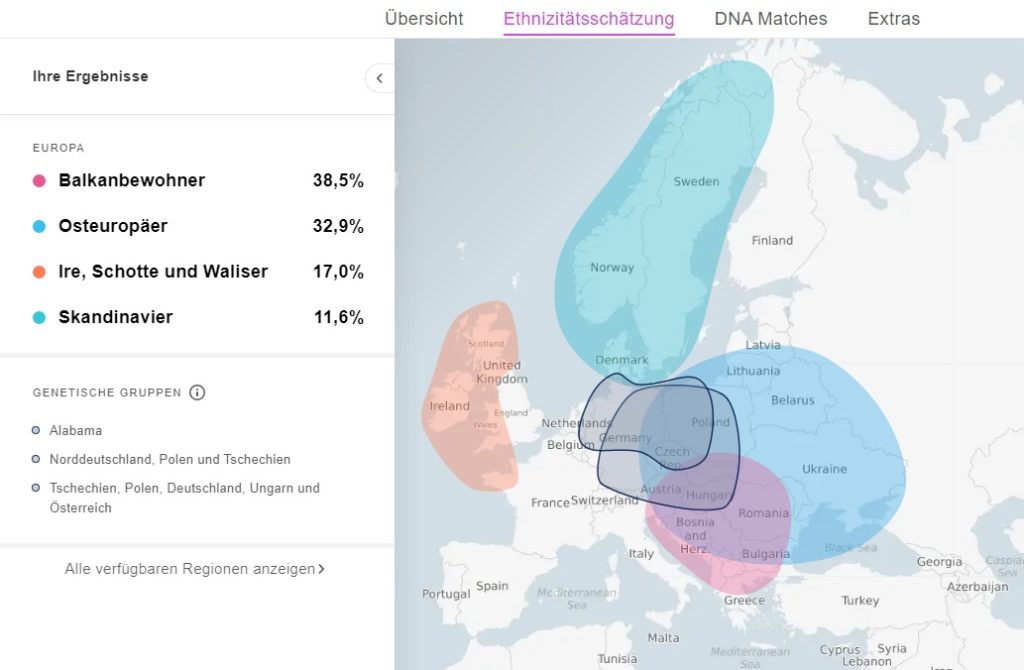Y-DNA – Haplogroup Origins
Parent haplogroup: R-M198
Age: 10,000
Region: Central Asia, the Indian Subcontinent, Eastern and Northern Europe.

We all descend from one single person, but of course the DNA test that we do is not to tell us this obvious fact.
Since we all descent from one person, and then from a few families, and as times goes by those families keep branching out up to the point where we get to our own family nest, it would be natural that when we check our DNA, the less markers we check, the less unique they are, and the more markers we test, the more unique the whole string of markers is. In other words, to go to extremes, if we tested only one marker, we would most certainly match with millions of individuals that shared that marker for thousands of years. But if on the other hand when we test many markers, we will match very very few people that share those same markers. Those would be the ones that are closely related to us.

This is valid when checking our matches on 12, 25 or 37 markers. The likelihood that we will match other individuals with 12 markers is far greater than matching on 25 or 37. Especially if our family descends from a populational group that came from one or a few prolific families thousands of years ago (which is the case for Western Europe). Dr. Luigi Lucca Cavalli-Sforza, Professor Emeritus, Stanford University, in his fascinating book: The Great Human Diasporas: The History of Diversity and Evolutions says that the total population of Europe was 60,000 people at the end of the last Ice Age, about 10,000 years ago. Now Europe has a population of 300 million people. This increase is almost entirely due to a natural increase in population rather then immigration from other continents. Keeping this in mind it is reasonable that many people alive today in Europe will match with other Europeans from BEFORE the time that our ancestors began the adoption of surnames, and when you match someone who has a different surname your first thought should be that the ‘connection’ is distant rather then recent.
Our bodies work as copy machines when it comes to the Y-DNA. You can have a copy machine doing 1,000 copies without a problem, and then, the 1,001 copy may have an “o” that looks more like an “e”. And when we use this copy to make additional ones, all the new ones will now have an “e” instead of an “o”. This is a simple way to explain how mutations occur in our Y-DNA when it’s transferred (copied) from father to son. Mutations don’t happen frequently, on the contrary, very seldom, but they can happen randomly in time, which means that I could be one mutation off of my father. That is why all those matches or close matches on 12 markers will in most of the cases go away when they happen between different surnames, and we increased the numbered of markers that are compared: more mutations showing up, which means way back in time when the common ancestor lived.
